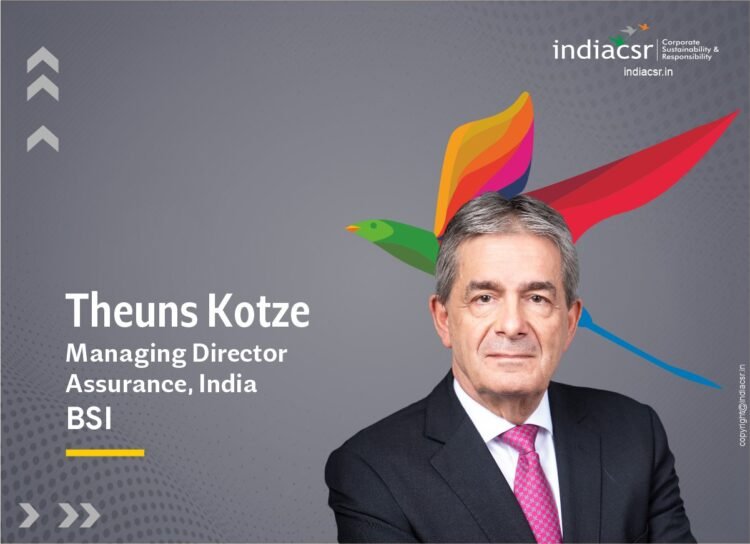It doesn’t get starker than a warning of “a code red for humanity”. That was the UN Intergovernmental Panel on Climate Change (IPCC)’s verdict, cautioning that the 1.5°C target for temperature rise limits will be exceeded by 2040 unless emissions are slashed imminently. They called for rapid action to meet the Paris Agreement goals to limit temperature rises via the reduction of greenhouse gas (GHG) emissions. These goals have, over the last decade fed into regional policies, laws and regulations, and have been a key motivator to businesses to act on decarbonization. But even without their influence, real-world evidence, such as increased rainfall, tropical storms, flooding, and rising temperatures, demonstrates the urgent need for the world to become low carbon. With climate change widely understood as a vital challenge, the emphasis is shifting towards organizations setting out on a decarbonization journey.
India is the third-largest emitter of carbon-dioxide globally, emitting a net 2.9 gigatons equivalent (GtCO2e) every year, of which 70% is driven by the power, steel, automotive, aviation, cement, and agriculture sectors. In recent years, the country revealed an ambitious goal of decarbonizing energy to 50% and achieving 500 GW of fossil fuel-free generating capacity by 2030. It has also pledge to reach net-zero emissions by 2070. Whilst this is a positive step forward in the fight against climate change, turning ambition into action is not straightforward.
Enhancing clarity about what decarbonization means or how to calculate emissions is central to accelerating progress on climate action. That’s because some of the concepts, for example carbon neutrality and net zero carbon, can be confusing. Net zero carbon refers to eliminating an equal amount of all greenhouse gases (GHGs) emitted into the atmosphere. This should be achieved by reducing emissions to the minimum possible level, and then if necessary, using only high quality, verified removals to mitigate any residual emissions, which can be no more than 10% of total emissions. Carbon neutrality refers to balancing the amount of emissions being emitted and removed from the atmosphere, which to varying degrees can be dependent on carbon offsetting throughout the process. Both have merits and will play a role in the world’s decarbonization efforts. But cutting through the jargon to understand what opportunity there is for your organization can be far from simple.
Equally, calculating emissions in a world with complex supply and value chains can add to the confusion. Imagine that you are a cardboard box manufacturer. It would be relatively simple to calculate your carbon emissions in the design and production of your goods – but that doesn’t consider the upstream and downstream emissions, for example the carbon cost of processing the raw materials, or materials travelling to get to the factory, or emissions from delivery to the end user.
These are just a few of the barriers to turning ambition into action. But while the task ahead may seem complex, there are some clear steps organizations can take to embark on their decarbonization journeys.
To begin with, it’s about deciding which areas of the organization to focus attention on, then identifying and prioritizing hotspots for action. This could mean achievable ‘quick wins’, such as modifying the supply chain, adopting renewable energy, or electrifying vehicle fleets. From there, it’s about evaluating the scopes (direct and indirect emissions) and mapping timeframes for goals and investment. For example, your first-year goal could be carbon neutral for direct emissions, while extending this to all indirect emissions could be your 10-year goal. It’s also key to determine where and how you will support and collaborate with suppliers or customers upstream or downstream in the value chain. And finally, organizations can consider whether they will attempt to neutralize historic emissions or establish a rigid ‘year zero’ starting point.
Alongside these steps, securing stakeholder buy-in is crucial, because it can improve collaboration and diminish apathy. With the support of everyone – from leaders and employees to your supply chain – organizations can build momentum behind their carbon management programmes. This means making a compelling case internally and externally for a more environmentally sustainable way of operating. This has the potential to bring benefits – for example a company with a purpose-led culture and a serious commitment to mitigating climate change could be a more appealing proposition to prospective employees. Achieving this in practice means nurturing a consistent and compelling decarbonization narrative, giving employees a voice and sharing success stories. Other key tactics can include factoring sustainability achievements into executive compensation – something BSI is already doing.
Of course, even by following these steps there may be as many questions as answers. International standards and assurance can play an important role in helping organizations overcome the obstacles to successfully decarbonizing. Standards are established guidance developed by industry experts, including researchers, consumers, and government. In the decarbonization space, both around net zero and carbon neutrality, there are a huge array that can provide practical help. For example, the GHG Emissions Verification standard (ISO 14064-1) categorizes emissions as either direct or indirect. The international Climate Change Management standard (ISO 14068-1) is designed to offer organizations clear, best practice guidance to make verifiable claims. And bringing all these components together are the ISO Net Zero Guidelines, which provide organizations of all sizes with a common reference for collective efforts, offering a global basis for harmonizing, understanding, and planning for net zero. Standards sit alongside regulation and voluntary adherence to them can also help organizations operate within the regulatory framework.
These tools can be critical in building trust in decarbonization efforts. Inevitably, with many organizations now pledging to become carbon neutral, net zero or even ‘carbon negative’, some may question the credibility of sustainability strategies. A solid commitment to impartial, internationally recognized standards can not only help organizations to transition, but it can also reassure customers and stakeholders of the commitment that has been made. In addition, independent verification or certification of sustainability efforts, rooted in international standards, can boost stakeholder confidence in claims. These include services such as verification of GHG emissions reporting, or certification to environmental or energy management system standards.
As the IPPC made clear, time is of the essence. Every organization, in every sector, in every country has a role to play in the world’s decarbonization efforts, and for each the journey will be distinct. But instead of seeing it as a challenge, we can shift mindset so that accelerating progress towards a sustainable world is seen as the opportunity it unquestionably represents.
About the Author
Theuns Kotze, Managing Director, Assurance, India, BSI.
(India CSR)





